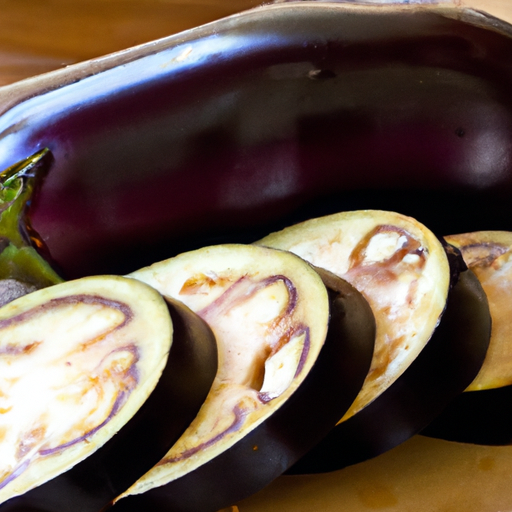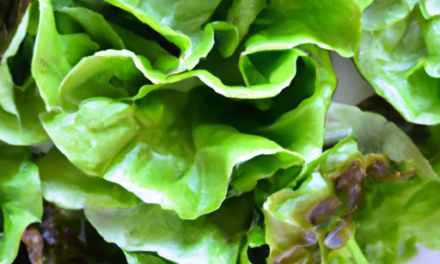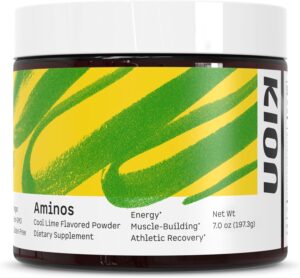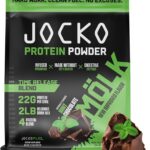
Eggplant Lasagna

Are you looking for a delicious and healthy recipe to satisfy your taste buds while still staying on track with your health goals? Look no further than Eggplant Lasagna! This Paleo-friendly dish is a flavorful twist on the classic lasagna, using eggplant slices instead of pasta. Packed with nutritious ingredients and bursting with flavors, this dish will leave you feeling satisfied and nourished. Let’s delve into the world of Eggplant Lasagna and discover how you can enjoy a guilt-free and scrumptious meal.
Ingredients
Eggplant
Eggplant is the star of this dish, serving as a delicious and nutritious alternative to traditional lasagna noodles. Look for firm, glossy, and evenly colored eggplants without any blemishes or soft spots. Choose medium-sized eggplants to ensure they cook evenly.
Tomato Sauce
A rich and flavorful tomato sauce is essential for a delicious eggplant lasagna. You can either make your own sauce using fresh tomatoes, onions, garlic, and herbs, or use a high-quality store-bought sauce for convenience. If making your own sauce, ensure that it is well-seasoned and cooked down to enhance the flavors.
Cheese
Choose a cheese that melts well and adds a creamy, gooey texture to your lasagna. Mozzarella is the classic choice, but you can also experiment with other options like provolone, fontina, or a combination of different cheeses. Grating the cheese yourself will give you the best texture and flavor.
Meat
While eggplant lasagna can be enjoyed as a vegetarian dish, adding meat brings an extra depth of flavor and protein. Ground beef, turkey, or sausage are popular choices, but you can also use shredded cooked chicken or diced pancetta. Season the meat with your favorite herbs and spices to complement the other flavors in the lasagna.
Vegetables
In addition to the eggplant, you can incorporate other vegetables to add more color and texture to your lasagna. Zucchini, bell peppers, mushrooms, and spinach are excellent options. Thinly slicing or dicing the vegetables ensures they cook evenly and blend well with the other ingredients.
Herbs and Spices
Herbs and spices are essential for seasoning and enhancing the flavors of your lasagna. Common choices include basil, oregano, thyme, garlic powder, onion powder, and red pepper flakes. Adjust the amounts according to your taste preferences, and feel free to experiment with different combinations.
Other Ingredients
While the core ingredients listed above are essential for eggplant lasagna, there is room for personalization and creativity. You can add ingredients like fresh basil leaves, grated Parmesan cheese, or even a pinch of nutmeg to elevate the flavors. Don’t be afraid to make the recipe your own by adding your favorite ingredients.
Preparation
Preparing the Eggplant
To ensure the best texture and taste, it’s important to properly prepare the eggplant. Start by washing the eggplants and removing the stem. Then, slice them into rounds or lengthwise strips, depending on your preference. Sprinkle salt on both sides of each slice and let them sit for about 30 minutes to draw out excess moisture and bitterness. Rinse the slices thoroughly and pat them dry before using in the lasagna.
Making the Tomato Sauce
If you decide to make your own tomato sauce, start by blanching and peeling ripe tomatoes. Heat olive oil in a large saucepan over medium heat and sauté finely chopped onions and minced garlic until translucent. Add the peeled tomatoes, along with any desired herbs and spices. Simmer the sauce on low heat for at least 30 minutes or until it thickens to your desired consistency. Remember to taste and adjust the seasonings as needed before using in the lasagna.
Cooking the Meat (Optional)
If you choose to include meat in your eggplant lasagna, cook it separately before assembling the dish. In a large skillet, heat some olive oil over medium heat and then add the ground beef, turkey, or sausage. Cook until browned, breaking up any large clumps with a wooden spoon. Drain any excess fat and season the meat with your preferred herbs and spices. Set it aside until ready to use in the lasagna.
Sautéing the Vegetables (Optional)
While not necessary, sautéing the additional vegetables can enhance their flavors and ensure that they are fully cooked in the lasagna. In a separate skillet, heat olive oil over medium-high heat and add the sliced or diced vegetables. Cook until they are tender but still slightly crisp. This step can be skipped if you prefer a more al dente texture for your vegetables.
Layering the Lasagna
Now that you have prepared all the components of your eggplant lasagna, it’s time to assemble it. Start by spreading a thin layer of tomato sauce on the bottom of your baking dish to prevent sticking. Arrange a single layer of eggplant slices over the sauce, followed by a layer of meat (if using), vegetables, and a sprinkle of cheese. Repeat the layers until all the ingredients are used, ending with a generous layer of cheese on top. Bake according to the cooking method you choose, as described in the next section.
Variations
Vegetarian
To make a vegetarian version of eggplant lasagna, simply omit the meat and focus on building layers of flavor using the eggplant, tomato sauce, cheese, and vegetables. The cheese will help provide some protein and add a creamy element to the dish. Consider adding additional vegetables or even cooked lentils for extra texture and nutrients.
Vegan
For a vegan eggplant lasagna, skip the cheese and find suitable alternatives for the tomato sauce and meat. You can make a vegan tomato sauce using crushed tomatoes, onions, garlic, and vegetable stock. Replace the meat with a protein-rich ingredient like tofu, tempeh, lentils, or a combination of vegetables and legumes.
Gluten-Free
Eggplant lasagna is naturally gluten-free since it does not rely on traditional wheat-based lasagna noodles. Just make sure that all the additional ingredients you use, such as the tomato sauce and cheese, are also gluten-free. Check the labels or make your own versions to ensure they meet your dietary needs.
Dairy-Free
If you’re lactose intolerant or follow a dairy-free diet, there are plenty of alternatives to traditional cheese that you can use in your eggplant lasagna. Look for dairy-free cheese alternatives made from nuts, soy, or rice. You can also experiment with nutritional yeast, which adds a cheesy flavor, or simply enjoy the lasagna without any cheese substitute.
Tips and Tricks
Choosing the Right Eggplant
When selecting eggplants for your lasagna, look for ones that are firm, glossy, and evenly colored. Avoid any eggplants with blemishes, soft spots, or wrinkled skin. Medium-sized eggplants are ideal as they will cook more evenly in the lasagna.
Slicing and Salting the Eggplant
To prevent your eggplant lasagna from becoming watery, it’s important to slice and salt the eggplant before layering it in the dish. Placing salt on the eggplant slices draws out excess moisture and bitterness. After salting, let the slices sit for about 30 minutes, then rinse them thoroughly and pat them dry before using.
Making a Flavorful Tomato Sauce
For a rich and flavorful tomato sauce, use ripe, fresh tomatoes or high-quality store-bought sauce. If making your own sauce, remember to cook it down to allow the flavors to develop fully. Adding herbs like basil, oregano, and thyme, along with garlic and onion, will contribute to a delicious sauce.
Adding Extra Flavor to the Meat
If you’re including meat in your eggplant lasagna, take the opportunity to season it with your favorite herbs and spices. This will add layers of flavor to the dish. Consider using a combination of dried herbs like basil, oregano, and thyme, along with garlic powder, onion powder, and a pinch of red pepper flakes for some heat.
Enhancing the Vegetables
To make your vegetable layers more flavorful, consider sautéing them before layering them in the lasagna. Sautéing vegetables like zucchini, bell peppers, mushrooms, or spinach will bring out their natural sweetness and ensure they are fully cooked in the lasagna. If you prefer a crisp texture, you can skip this step.
Choosing the Right Cheese
The choice of cheese in your eggplant lasagna can greatly affect the taste and texture of the dish. Mozzarella is the classic choice and melts beautifully, but you can also experiment with other options like provolone, fontina, or a combination of different cheeses. Grating the cheese yourself ensures a better texture and flavor compared to pre-packaged shredded cheese.
Cooking Methods
Oven-Baked Lasagna
The most common and traditional method for cooking eggplant lasagna is in the oven. Preheat your oven to 375°F (190°C) and bake the lasagna for about 45 minutes to an hour, or until the cheese is golden brown and bubbling. Let the lasagna rest for a few minutes before slicing and serving.
Stovetop Lasagna
If you’re looking for a quicker cooking method, you can make a stovetop lasagna using a large skillet or pot. Layer the ingredients as you would for an oven-baked lasagna, but cover the skillet and cook over low heat for about 30-40 minutes. This method results in a slightly different texture but still yields a delicious lasagna.
Slow Cooker Lasagna
For a hands-off approach, you can also make eggplant lasagna in a slow cooker. Layer the ingredients in the slow cooker, starting with the tomato sauce and ending with the cheese. Cook on low heat for 4-6 hours or on high heat for 2-4 hours. This method allows the flavors to meld together slowly and creates a tender lasagna.
Serving and Pairing
Serving Size
The serving size of eggplant lasagna can vary depending on the appetite of those you’re serving. As a general guideline, a standard serving size is approximately 1-2 pieces, depending on the size of the lasagna. Consider serving it alongside a fresh salad or some crusty bread to complete the meal.
Garnish Suggestions
To add an extra touch to your eggplant lasagna, consider garnishing it with fresh herbs like basil or parsley. You can also sprinkle some grated Parmesan cheese or drizzle a bit of high-quality extra virgin olive oil on top. These garnishes not only enhance the presentation but also add additional flavors to the dish.
Pairing Ideas
Eggplant lasagna pairs well with a variety of side dishes and accompaniments. Serve it with a fresh green salad dressed with a light vinaigrette for a refreshing contrast. A side of garlic bread or cheesy garlic knots makes a delicious addition. For a more substantial meal, serve it with roasted vegetables or grilled chicken. Don’t forget a glass of red wine or a sparkling water with a slice of lemon to complete the dining experience.
Storage and Reheating
Proper Storage
If you have leftovers, store the eggplant lasagna in an airtight container in the refrigerator. It can be stored for up to 3-4 days. Make sure the lasagna is cooled completely before refrigerating to prevent condensation, which could make it soggy.
Reheating Instructions
To reheat the lasagna, you have a few options. The easiest method is to place individual portions in the microwave and heat them on medium heat in 1-minute intervals until heated through. Another option is to reheat in the oven at 350°F (175°C) for about 15-20 minutes or until warmed to your liking. The time may vary depending on the amount of lasagna you are reheating.
FAQs
Can I Make Eggplant Lasagna Ahead?
Yes, you can definitely make eggplant lasagna ahead of time. Prepare the lasagna as instructed and refrigerate it before baking. When you’re ready to serve, simply remove it from the refrigerator and let it sit at room temperature for about 30 minutes to take the chill off. Then, bake as directed in the recipe.
Can I Freeze Eggplant Lasagna?
Yes, you can freeze eggplant lasagna for future enjoyment. Assemble the lasagna but do not bake it. Cover it tightly with plastic wrap and then foil to prevent freezer burn. Freeze for up to 3 months. When you’re ready to enjoy it, thaw it overnight in the refrigerator, then bake according to the recipe instructions.
What If I Don’t Like Eggplant?
If you’re not a fan of eggplant, you can still enjoy the flavors and concept of lasagna by substituting the eggplant with other vegetables like zucchini, yellow squash, or even layers of thinly sliced potatoes. The cooking times may vary, so make sure to adjust accordingly.
Can I Use Store-Bought Sauce and Cheese?
Absolutely! Using store-bought sauce and cheese is a convenient and time-saving option. Choose high-quality brands that you enjoy and that complement the flavors of the other ingredients in the lasagna.
How Long Does Eggplant Lasagna Last?
Properly stored in the refrigerator, eggplant lasagna will last for 3-4 days. Just make sure to keep it in an airtight container to maintain its freshness and prevent contamination.
Can I Make the Lasagna without Meat?
Yes, you can omit the meat entirely and still enjoy a delicious eggplant lasagna. The cheese, tomato sauce, and vegetable layers provide plenty of flavor and texture.
Can I Make the Lasagna without Cheese?
While cheese plays a significant role in traditional lasagna, you can make a dairy-free or vegan lasagna by omitting the cheese altogether. Instead, focus on seasoning the other components of the lasagna and consider adding nutritional yeast for a cheesy flavor.
Health Benefits
Eggplant as a Nutritious Vegetable
Eggplant is a nutritious vegetable that makes a great base for a healthy lasagna. It is rich in fiber, antioxidants, and vitamins, including vitamin C, vitamin K, and B vitamins. Additionally, eggplant is low in calories and high in water content, making it a great choice for weight management and overall health.
Paleo-Friendly and Low-Carb
Eggplant lasagna is a perfect option for those following a paleo diet or looking for low-carb alternatives. By replacing traditional lasagna noodles with eggplant slices, you eliminate the grains and reduce the carb content significantly. This can help support weight loss, stabilize blood sugar levels, and promote overall well-being.
Conclusion
Eggplant lasagna is a delicious and nutritious twist on the classic Italian dish. With its versatile ingredients and customizable options, you can make it to suit various dietary preferences and restrictions. Whether you’re a vegetarian, vegan, gluten-free, or simply looking for a healthier alternative, eggplant lasagna offers a flavorful and satisfying meal. With the right preparation and cooking methods, you can enjoy a hearty and wholesome lasagna that will surely become a family favorite.























